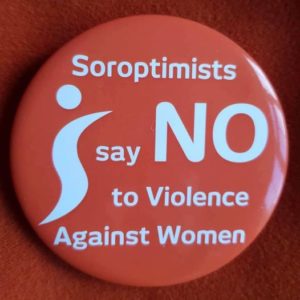Violence against women and girls is one of the most widespread, persistent and devastating violations of human rights in our world today.
It is a major obstacle to the fulfilment of women’s and girls’ human rights and to the achievement of Sustainable Development Goal 5, Gender Equality. It occurs worldwide, cutting across all generations, nationalities, communities and spheres of our societies. Violence Against Women Must Stop.
 On International Women’s Day, MP Jess Phillips read out the names of all 118 women and girls killed over the previous 12 months in the UK where a man has been convicted or charged as the main perpetrator.
On International Women’s Day, MP Jess Phillips read out the names of all 118 women and girls killed over the previous 12 months in the UK where a man has been convicted or charged as the main perpetrator.
This year it fell on the very day on which remains were found in the hunt for Sarah Everard. “Dead women is a thing we’ve all just accepted as part of our daily lives,” Ms Phillips told Parliament. “Killed women are not vanishingly rare. Killed women are common.”
But the issue of violence against women is not one for the UK alone. The World Health Organization last week published a report saying one in three women globally, around 736 million, had been subjected to physical or sexual violence in their lifetimes.
Following the arrest and charging of a police officer with Sarah’s murder, the head of the Metropolitan Police Cressida Dick acknowledged that women in London and beyond “will be worried and may well be feeling scared”, although she said for a woman to be abducted off the street was an “incredibly rare” event.
We can warn females to be careful about being out alone – but is this the answer? It is crucial that men and boys are engaged. We cannot continue to place the onus on the victim’s shoulders. If women are told to change their behaviour in order to stay safe, the perpetrators are still out there and posing a danger to others. We need to tackle the root of the problem – male violence.
The importance of men in tackling violence against women is central to the work of the White Ribbon UK charity. According to founder Chris Green, “It is men’s responsibility to challenge other men and ourselves in our behaviours.”
We need to educate all in order to protect all.
Soroptimists worldwide campaign for gender equality because women feature disproportionately in the statistics on violence. Domestic violence in particular, results in proportionately more deaths and injuries for women.
 The questions are: how can we assist, how can we contribute to achieve the Soroptimist vision of peaceful communities?
The questions are: how can we assist, how can we contribute to achieve the Soroptimist vision of peaceful communities?
This issue has been around for years and we hear below the comments of two of our Club members who experienced the fear on the streets at the time of the Yorkshire Ripper. Over 40 years later, I’m not sure we have learned all that much.
Leeds University student
I went off to Leeds University in October 1978 to study Modern Languages with Linguistics & Phonetics.
While the Yorkshire Ripper was active at that time (and had been since at least 1975 if not before), there was not one mention of his activities in Freshers Briefings nor from the University itself.
I suspect that might have been because his early attacks had been on sex workers and there may have been an assumption that “innocent girls” (like us?) would not have been his targets. That inbuilt misogyny and judgemental thinking led to a false sense of security in the minds of the authorities, passed on via the press into the minds of the local population. A kind of “they’re only prostitutes” thinking…
This is reflected in the words of a senior detective from West Yorkshire Police in a press briefing made in 1979.
“[The perpetrator] has made it clear that he hates prostitutes. Many people do. We, as a police force, will continue to arrest prostitutes. But the Ripper is now killing innocent girls. That indicates your mental state and that you are in urgent need of medical attention. You have made your point. Give yourself up before another innocent woman dies”.
This left women students in the position of having to inform themselves and act accordingly. None of us went out alone after dusk. We went around in groups – the larger the better – and constrained our activities accordingly. In those days much private student accommodation was in what were known as “red light areas” so walking home from the pub after dusk was a non starter.
I recall that as the public became more aware of the Ripper’s activities, that men of all ages would cross the road and walk on the other side away from us in order not to make us fearful. This was usually accompanied by friendly banter and much chat and I know of at least one very happy marriage that resulted from such an encounter!
On the way back from a club in the early hours of one Sunday morning, a group of us met a young woman of our own age walking alone. We invited her to walk with us but she refused vehemently saying that she should be able to walk alone wherever and whenever she wished…And of course, she should. That’s the whole point, and yet…
What brought the whole issue very “close to home” was the fact that the Ripper’s final victim was a young Leeds Uni student called Jacqueline Hill 20, who studied English and was a volunteer with the Probation Service. She was found 100 yards from her Halls of Residence.
She was clearly a wonderful person from the tributes made to her. And isn’t it a pity that the same warm tributes weren’t made to the Ripper’s other victims who happened to be sex workers?
The Attorney General, Sir Michael Havers QC, at the trial in 1981 said of Sutcliffe’s victims in his opening statement: “Some were prostitutes, but perhaps the saddest part of the case is that some were not. The last six attacks were on totally respectable women”
As if someone’s way of earning a living or background is in any way an indicator of their right to life or their human value?
Manchester University student
On October 1 1977, my parents took me to Manchester University for the start of my Applied Language Studies course.
As I walked round Manchester City Centre with other first year students, little did we know that, later that very day, the Yorkshire Ripper crossed the Pennines to find another victim. Jean Jordan lived in Hulme Crescents and had turned to sex work to feed her children. She was only 20 when he picked her up in Moss Side, then a red light district, and murdered her.
In May 1978, the Ripper returned to Manchester to kill Vera Millward near Manchester Royal Infirmary – right across the road from my student accommodation.
It was apparent to all students that there was a serial killer stalking the streets in which we lived.
Appallingly, as most of the victims were prostitutes, it seemed as though it wasn’t a concern for some. However, when the number of his victims who weren’t prostitutes increased, more people began to sit up and listen.
The Ripper didn’t stop and safety became an issue, not only for the students in Manchester, but throughout the north of England.
Female students always went out together, there was no question of letting anyone go out alone. It was a frightening time – always on your guard, always checking and being aware of anybody walking behind.
By the time he was captured, he had killed 13 women and attempted to murder seven more.
He had terrorised the entire north of England – and he had made me aware, taking my first steps into adult life, of just what a harsh world it can be.

